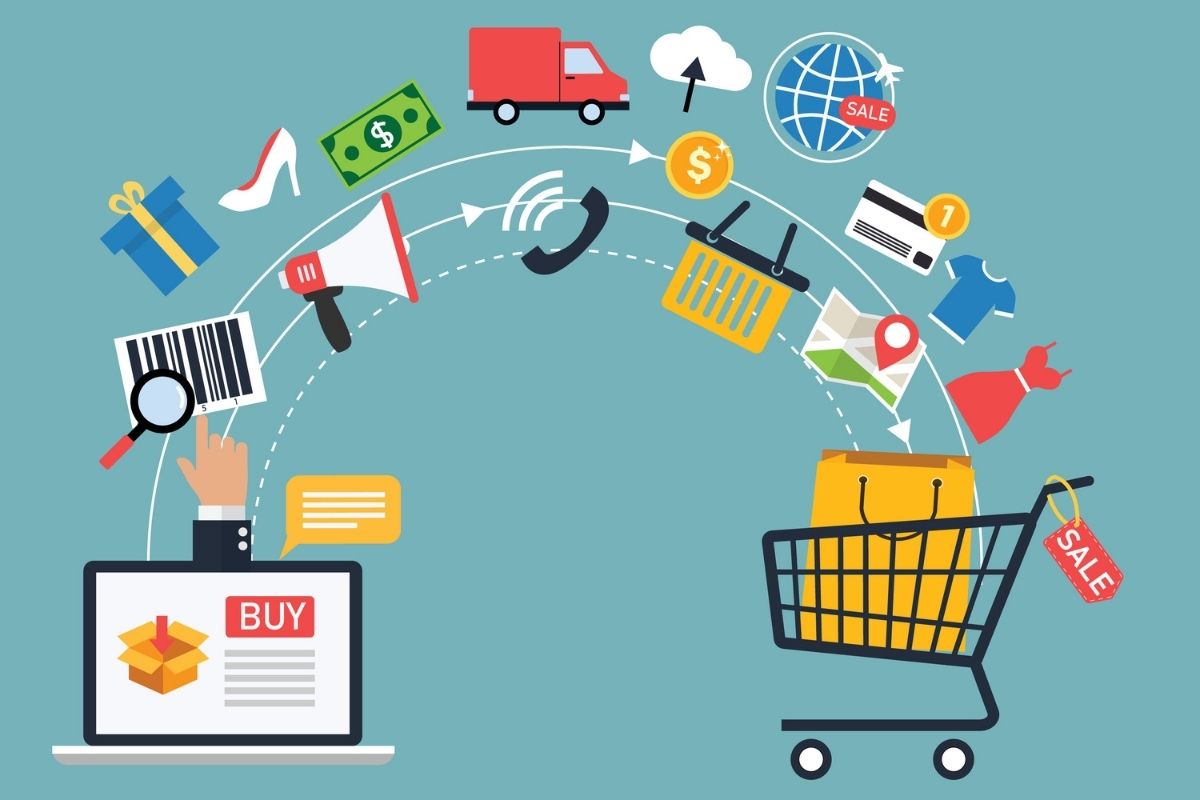
1 Mar
The Progress Of E-Commerce
The digital age has revolutionized the way we shop, and with this comes a new phenomenon known as e-commerce. In recent years, the popularity of online shopping has skyrocketed as more and more consumers embrace the convenience and ease of purchasing products from the comfort of their own homes. But what does this mean for the future of e-commerce? From its benefits to its challenges, this article will explore the progress of e-commerce to answer that question. With technological advances constantly pushing boundaries, it’s no surprise that online shopping has become an integral part of our lives. So let us take a journey through the world of e-commerce – all aboard!
E-Commerce
E-commerce is a rapidly growing industry that has changed the way we shop. With more and more consumers opting to purchase goods and services online, businesses are beginning to take advantage of this trend to reach new markets and increase their profits. The ability to quickly and easily make purchases from anywhere with an internet connection has opened up a world of possibilities for shoppers, allowing them to access a variety of products from around the globe with ease. Additionally, e-commerce has enabled businesses to streamline their operations by utilizing electronic transmissions and single-platform solutions for ordering and payment processing. As the technology behind e-commerce continues to evolve, so do customer experiences as companies strive to create user-friendly, secure websites for their customers. With increasing internet access across the world, there’s no doubt that e-commerce will continue its growth in the years ahead.
As e-commerce continues to revolutionize the shopping experience, businesses have an incredible opportunity to expand their reach and tap into new markets. With its convenience, security, and versatility, it’s no wonder that online shopping has become so popular!
The popularity of Online Shopping
Online shopping has become a popular way for many people to purchase goods and services. With the ability to access stores from anywhere with an internet connection, customers can find what they need quickly and easily. Additionally, customers are often drawn to the convenience of being able to compare prices and read reviews before making their purchase decision. Shopping online also allows users to find discounts or special offers that may not be available in retail stores, providing even more value for their money. Furthermore, online shopping is often cheaper than buying in a physical store due to lower overhead costs associated with running an online business. All these factors have contributed to the increased popularity of online shopping in recent years, showing no signs of slowing down anytime soon.
Overall, online shopping has become an attractive, convenient, and cost-effective way to purchase goods and services. With its many advantages, it is no wonder that more and more people are choosing to shop online. But why exactly has e-commerce activity seen such a dramatic increase? Stay tuned to find out!

Reasons for Increased E-Commerce Activity
E-commerce activity has seen a dramatic rise in recent years, and there are a few key reasons for this increase. One of the main factors is that more people now have access to internet services than ever before. With fast, reliable connections easily available all around the world, customers can shop online quickly and conveniently from any location. Additionally, e-commerce platforms have become much more user-friendly, allowing customers to navigate websites with ease and find what they need in no time. Furthermore, companies are investing heavily in improving their customer experience by providing personalized product recommendations and faster delivery times. Finally, online retailers have been offering attractive discounts and special offers to lure customers away from traditional retail stores. All these factors have combined to make e-commerce an increasingly attractive option for both businesses and consumers alike.
Benefits to Consumers and Businesses
The rise of e-commerce has been a boon for both consumers and businesses. Consumers enjoy the convenience of shopping from home, being able to compare prices quickly, and having access to a wider range of products than ever before. Furthermore, customers benefit from faster delivery times and more personalized recommendations. For businesses, e-commerce provides an efficient platform for selling products that can be accessed by customers around the world. Companies also benefit from lower overhead costs associated with running an online store compared to traditional retail stores, as well as increased customer engagement through targeted marketing strategies. All in all, e-commerce is becoming increasingly popular due to the advantages it offers both consumers and businesses alike.
Challenges in E-Commerce
The rapid growth of e-commerce has come with a range of challenges. One of the most pressing issues is the threat of cybercrime, which can take many forms such as identity theft, phishing scams, and data breaches. Securing customer data and protecting against malicious activity requires the careful implementation of security measures such as encryption and authentication protocols. Furthermore, businesses must also stay up to date with ever-evolving regulations that govern online transactions to remain compliant. Another challenge is providing a consistently positive customer experience across different platforms, devices, and geographical locations. From ensuring website loading times are fast to offering easy payment methods, there are many considerations when optimizing the user experience for customers using an e-commerce platform. Finally, businesses must also ensure they have access to reliable internet access to keep their e-commerce operations running smoothly. All these factors contribute to making running an online business a complex task but one that is essential for success in today’s digital world.
E-commerce is evolving quickly, and businesses must be agile to stay ahead of the competition. With the right tools, strategy, and security measures in place, e-commerce has the potential to revolutionize the way we interact with customers and conduct business. But don’t forget: privacy and security are key considerations when operating an online business – next up, let’s explore how to protect your data and customers’ information!
Privacy and Security Issues
Privacy and security are essential considerations when running an e-commerce business. To protect customer data, businesses must implement strong encryption protocols and authentication measures. Additionally, they should stay up to date with relevant regulations, such as the General Data Protection Regulation (GDPR). This regulation is designed to ensure that companies properly manage and protect consumers’ personal information. Other security measures include setting up firewalls, monitoring suspicious activity, and implementing two-factor authentication for online transactions. Finally, companies should also ensure their website is regularly updated with the latest software patches to avoid any potential risks of malicious activity. Taking these steps will help protect both your customers and your business from cyber threats.
Customer Service Challenges
Customer service is an important part of any e-commerce business. However, there are some challenges that companies may face when providing customer service in the digital age. For example, customers may experience difficulty navigating websites due to a lack of user-friendly design or slow loading times. Furthermore, customers may struggle with technical problems such as website crashes or payment failures. To address these issues, businesses must focus on improving the overall customer experience by ensuring their websites are optimized for speed and usability. Additionally, businesses should provide multiple contact methods so that customers can easily get in touch with customer service representatives if they have any issues. Finally, businesses should also ensure they have trained staff who can quickly resolve customer queries and complaints promptly. With these measures in place, businesses can ensure they provide an excellent level of customer service to their online shoppers.
Delivery and Logistics Issues
Delivery and logistics issues are common problems for e-commerce businesses. Poor delivery times and unreliable shipping services can lead to customer dissatisfaction, as shoppers expect their orders to arrive on time and in perfect condition. To minimize these problems, businesses should focus on establishing supply chain partnerships that offer reliable delivery services and efficient tracking systems. Additionally, businesses should look into utilizing automated solutions such as order fulfillment software to streamline their processes and reduce the risk of errors. Finally, businesses should also ensure that they have clear return policies so customers can easily get refunds or replacements for faulty products. With these measures in place, businesses can ensure that their customers receive their orders quickly and without any hassle.

Future Outlook For E-Commerce
The future outlook for e-commerce looks very promising. With the rise of digital technologies and internet access, more and more consumers are turning to online shopping and businesses are taking advantage of this trend. Thanks to e-commerce platforms, businesses can now offer a variety of product categories and digital products to their customers with ease. Additionally, user experience is also becoming increasingly important as customers expect an enjoyable experience when they shop online. Furthermore, advancements in technology have enabled faster electronic transmissions, allowing businesses to process transactions quickly and securely. All these factors point towards a bright future for e-commerce as it continues to expand its reach across the globe.
As the world of e-commerce continues to evolve and expand, it is becoming clear that this industry holds immense potential for businesses and customers alike. With its user-friendly platforms, secure transactions, and ever-increasing product offerings, the future of e-commerce looks very bright indeed. Looking ahead to the future of the industry, we can expect to see an even greater surge in growth as businesses capitalize on this flourishing sector.
Anticipated Growth in the Industry
As e-commerce continues to grow and expand, businesses should anticipate a major increase in the industry’s growth. Online retail sales are expected to continue to rise as more customers turn to the convenience of shopping online. Additionally, advances in technology mean that customer experience is becoming increasingly important. As a result, businesses must provide a satisfactory customer experience or risk losing them to competitors. Furthermore, e-commerce platforms are becoming ever more sophisticated, allowing businesses to offer single-platform solutions for their customers and easily manage large volumes of transactions. All these factors contribute towards the anticipated growth of the industry and point towards an exciting future for e-commerce business models.
Potential Changes to the Online Shopping Experience
The online shopping experience is rapidly evolving and businesses must keep up with the changes to stay competitive. As internet access continues to become more widespread, customers now expect a seamless experience across all platforms. To meet this demand, businesses are developing user-friendly interfaces, offering personalized product recommendations, and making use of digital products such as augmented reality and virtual reality. Additionally, businesses are integrating artificial intelligence into the customer service process to provide a more efficient and personalized experience. Finally, e-commerce platforms are becoming increasingly sophisticated, allowing customers to easily purchase items from multiple product categories with just a few clicks. All these changes have greatly improved the online shopping experience and will likely continue to do so as technology advances.
Conclusion
In conclusion, the progress of e-commerce has been remarkable and continues to revolutionize the way businesses and consumers interact. The focus has shifted towards providing customers with a seamless online experience, as well as offering personalized products, services, and recommendations. Businesses are also taking advantage of innovative technologies such as augmented reality, virtual reality, and artificial intelligence to further enhance the customer experience. All these advancements have made it easier for customers to shop online and have increased e-commerce sales. With more internet users turning to digital platforms for their shopping needs, businesses must continue to adapt to remain competitive and provide the best user experience possible.
Proudly powered byWordPress. Theme byInfigo Software.








